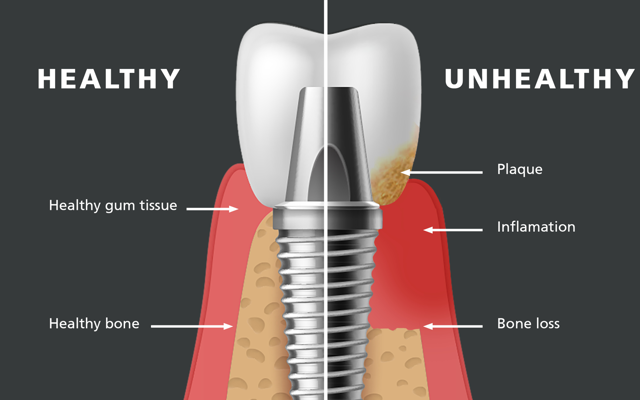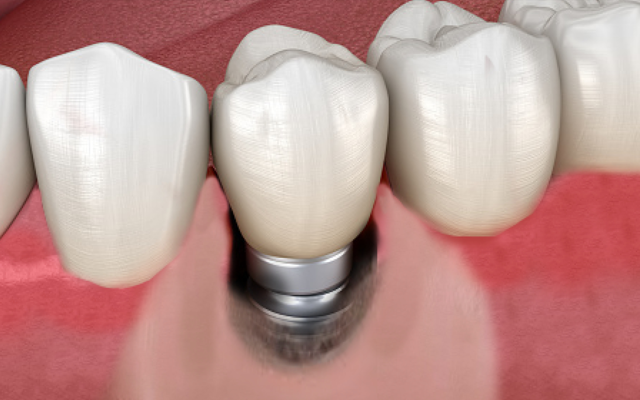Peri-implant Diseases
Peri-implant Diseases
Peri-implant diseases (peri-implant mucositis and peri-implantitis) are inflammatory diseases of the tissues surrounding a dental implant. The diseases are caused by the body’s response to the build-up of plaque (bacteria) around the implant (Figure 16A).
Peri-implant mucositis affects the soft tissues (gum) around the implant. The visible signs are bleeding when brushing, or bleeding when the dentist gently checks around the implant using a probe. The soft tissues may also appear red and swollen.
Peri-implant mucositis can be treated and the soft tissues surrounding the implant can become healthy again with no signs of bleeding. The treatment involves regular mechanical removal of the plaque around the implant. Plaque removal should be performed daily at home, using a toothbrush and cleaning in between the surrounding teeth and implant in addition to at least twice per year by the dentist or dental hygienist.

If peri-implant mucositis is left untreated it can in some people progress to peri-implantitis (Figure 16B). Peri-implantitis affects both the soft tissues (gum) and the bone supporting the implant. The visible signs are bleeding on brushing, pus coming from around the implant, recession or swelling of the gums around the implant. A radiograph (x-ray) taken by the dentist will show the amount of bone loss around the implant and confirm the diagnosis of peri-implantitis.
Peri-implantitis can be treated, however, it can be difficult to treat when there is advanced bone loss, so prevention of peri-implantitis by treating peri-implant mucositis is important.

Treatment of peri-implantitis involves professional cleaning of the implant. Where the bone loss is advanced, a surgical procedure is often needed to properly clean the implant. If peri-implantitis is left untreated the bone loss can progress, in some cases quite quickly, and the implant may be lost.
Most people with peri-implant diseases do not experience pain or symptoms. Even when there is advanced peri-implantitis with extensive bone loss around the implant, the implant will not feel loose. This means it is very important to have the health of the tissues surrounding the implant checked by the dentist at least twice per year.
Some people are at greater risk for peri-implant diseases than others. Today we know that people who have had gum disease affecting their own teeth, are unable to clean around the implant well, or do not attend for regular maintenance care are at higher risk for peri-implant diseases.
